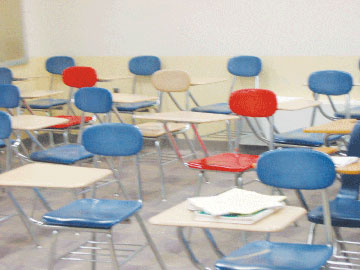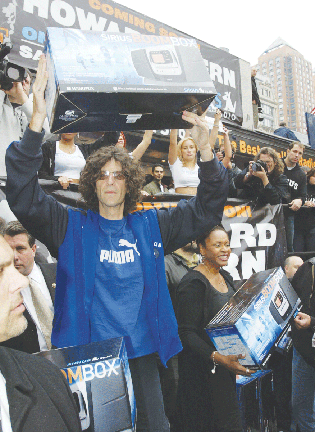REVIEW: Suspiria
October 20, 2004
SuspiriaDirector – Dario Argento”The only thing more terrifying than the last 10 minutes of this film is the first 90.”197792 min – rated R
“Susssspiiriaaa!” This title works better when it’s whispered and then played back extremely loud. At least that is how they say it repeatedly during the movie’s trailer. In fact, amplified whispers are a repeating theme in the movie’s extremely effective soundtrack. So, while watching Suspiria it’s very important that you do two things: first – watch it in the dark, and second – watch it with the volume turned all the way up to 11.
Director Dario Argento somewhat sacrifices coherent storytelling in an attempt to remove Suspiria from the reality and instead place it in the nightmarish void of Argento’s imagination. Scenery is drenched in a wash of vivid primary colors, as Argento makes an effective example of how exact lighting can manipulate a film’s overall tone. The set’s jarring 70s Italian patterns and prints serve to exaggerate the film’s surreal and dreamlike quality. Most of Suspiria’s action takes place in a single building, the Tans Academy Dance School. The unique character of the set acts as one of the most intimidating and frightening visual forces in the film, in much the same manner as the Hill House featured in Robert Wise’ 1963 film The Haunting.
Then there’s the soundtrack. Preformed by Italian prog-rockers Goblin, who had already staked out a career recording the film scores to several horror movies, including George A. Romero’s Dawn of the Dead. Argento worked closely with the musicians to get the music to enhance the threatening mood of his film. Comprised of gentle, almost nursery rhyme-like melodies that are perverted by pulsating baselines, thundering drums, and the above-mentioned shouted whispers and demonic gurgles. Argento reportedly blasted the soundtrack during shoot to give the actors the same haunting uneasiness and paranoia that he wanted translated onto the viewer. Almost as much, if not more, credit must be given to success of the soundtrack as is given to Argento’s visual assaults. Together they manage to sustain the feeling of suspense and lingering danger in almost every scene of the movie. This makes what would normally be a rather boring scene, like the opening of a door or a character standing out in the rain for a taxi, instead seem frighteningly dramatic. The eeriness and terror is amplified during the scenes that involve actual terror and violence.
This high level of intensity, overwhelming audio and visual stimulation lets up only briefly, long enough to deliver the more straightforward scenes of exposition and story development. On the surface, one might find the plot surrounding the main character to be a bit thin. But when considered that the film functions better as an atmospheric dreamscape, where images and scenes flow non-linearly to build an overall mood, instead of merely telling a consistent tale, plot criticism should be de-emphasized.
The plot concerns Suzy Brown (Jessica Harper) as she arrives in Germany having traveled from New York to attend the prestigious Tans Academy Dance School. Upon arriving at the school she witness one of her fellow students mysteriously running away from the academy while mumbling hysterically. That same night, the runaway student is brutally murdered and later several other people associated with the academy meet equally violent endings. As Suzy digs deeper and deeper into the history of the academy, eventually discovering its connection to the occult and witchcraft, her own health and safety becomes increasingly threatened. Eventually, she must confront the forces that have been terrorizing the students of the school.
Suspiria is an extremely effective horror film that breaks away from simply regurgitating conventions of the genre. Instead, it operates more like an elaborately directed art film that just happens to be about, you know, people getting killed. Highly recommended.






















































